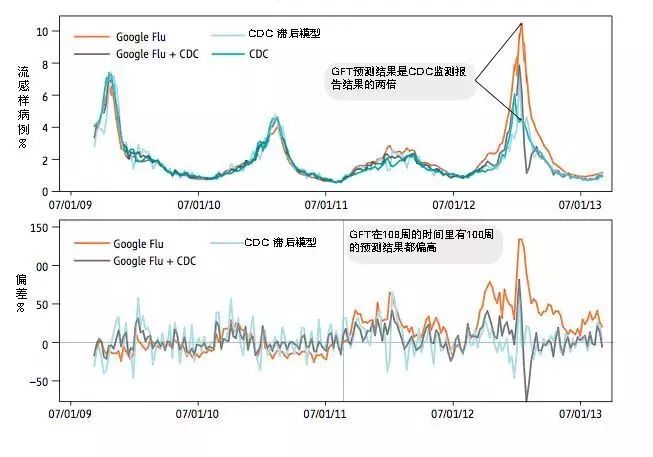The winter has passed, the temperature has dropped, and it has reached the high season of influenza. This year's flu vaccine shortage has made everyone more nervous about the flu. Nowadays, the application of big data in the medical industry is gradually deepening, and more and more enterprises are entering the field of influenza prediction and monitoring, hoping to master the prevention of influenza through big data technology.
In the first half of each year, the WHO (World Health Organization) will make an epidemic prediction for the influenza virus classification of the year, and predict three to four strains that may be prevalent in the year. Relevant departments also need to grasp the outbreak of influenza in a timely manner and make effective prevention and control guidance.

Google was one of the first organizations to use the big data to predict the flu, but now it seems to be a classic lesson.
Google initially believed that through its huge search base, when people search for flu or related keywords in a certain period of time, they can reflect certain social phenomena. When these search results are put together, it is possible to build an accurate and reliable model to monitor the current flu epidemic in real time and estimate future outbreak conditions.
In 2008, Google engineers launched a product called "Google Flu Trends." In 2009, the GFT team published a report on Nature, which only needs to analyze 45 flu-related keywords in billions of searches. GFT can predict the incidence of influenza in 2007-2008 two weeks ahead of CDC. Widely sought after.
However, because Google's data source is the user's search behavior, when some events affect the user's search, the results will be greatly deviated, and Google is still lacking in data analysis, such as not removing systematic errors.

There are many pitfalls in big data analysis, and Google has given you a vivid lesson through this project.

With the development of information technology and the improvement of the cost performance of related software and hardware, a considerable number of data service providers and regional medical service networks have begun to use big data to find the most effective and cost-effective means of medicine, prevention and intervention.
Many regions have begun to establish a medical big data platform to unify local hospital data. The registration and medical treatment data from the hospital can most clearly reflect the outbreak of the disease. Some people will also say that a cold is a minor illness, and many people buy some medicine without going to the hospital. At this time, the data of the drug regulatory big data platform will be supplemented, and the purchase and use of drugs will also become an important consideration.
With the improvement of the medical system, the advancement of drug traceability technology, the construction of big data platforms and the opening of data from all parties, we can collect more and more data that cannot be mastered, and all localities will be able to grasp the prevalence of the region more timely and accurately. Disease trend.
In addition to medical data, there are also some Internet companies that use Internet thinking to make flu predictions.
With its positioning in the professional medical community, Lilac Garden has attracted many doctors to settle in, and through its use of many products, it can also predict disease outbreaks. For example, as the spread of the flu epidemic increases, doctors pay more attention to flu medication. Through its "medicine assistant", you can see the drugs that doctors generally view, the drugs actually used. It can also find more effective drugs for different viruses, providing a basis for future AI diagnosis and treatment.

With the advancement of information technology such as Internet of Things, cloud computing, big data, artificial intelligence, etc., the degree of intelligence of hospitals is getting higher and higher, local governments continue to promote medical big data sharing and application, and provide more data for disease prevention and prevention. .
In 2014, the National Health and Family Planning Commission formulated the “46312†project, relying on the integrated public health information system, the primary health care management information system, and the medical health public service system to create a comprehensive and three-dimensional national health plan family resource system.
China CDC's big data analysis platform for infectious disease dynamic monitoring established by big data analysis technology can monitor the distribution and flow of patients through spatial distribution; detect the episodes of infectious diseases through nuclear density analysis; And moving the percentile threshold to dynamically warn of the occurrence of infectious diseases.

In the future, the outbreak of influenza, the type of influenza, the type of virus strain, and the cause of the outbreak of influenza may be accurately judged to suppress the occurrence of large-scale epidemics. From the flu to other diseases, we can use technology to continuously improve medical standards and medical experience, and make residents' lives healthier.
Plant Extract,Pure Plant Extract,Organic Plant Extract,Natural Plant Extracts
Allied Extracts Solutions , https://www.nballiedbiosolutions.com